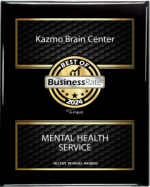Chiropractic adjustment is a hands-on treatment that chiropractors use to manipulate the spine. It is a popular treatment for back pain, neck pain, and other musculoskeletal conditions.
Do-It-Yourself Chiropractic Adjustments
Warning: It is not recommended to perform chiropractic adjustments on yourself. Chiropractic adjustments can be complex and dangerous if done incorrectly. It is important to see a qualified chiropractor for any chiropractic adjustments.
Additionally, chiropractic adjustments are often performed in conjunction with other treatments, such as physical therapy or massage therapy. A qualified chiropractor can develop a personalized treatment plan for you.
Types of Chiropractic Adjusting Techniques
Chiropractors use many methods to perform adjustments, such as:
- Spinal manipulation – The chiropractor manually applies force and thrusts to move joints and realign the spine. This is the most common technique.
- Instrument-assisted adjustment – The chiropractor uses a handheld tool to apply precise pressure to the affected joint. Common instruments include activators, integrated drop pieces, and adjustment instruments.
- Gonstead technique – Uses specific adjustments tailored to the patient while monitoring their reflexes. Focuses on the spine’s lower portion.
- Sacral occipital technique (SOT) – The gentle method targets the misaligned neck, head, and spine bones. Uses wedges and blocks under patients as they lay face-down.
- Thompson technique – Involves using a specialized drop table to adjust the full spine and pelvis gently.
- Flexion-distraction – Uses a specialized table with a moveable section that gently distracts and mobilizes the spine using pumping motions.
Different Types of Chiropractic Adjustments
Chiropractors use various adjustment techniques to target different regions of the body.
- Spinal adjustments: These adjustments target the joints and vertebrae along the spine to improve mobility and alignment. Common techniques include lumbar rolls, thoracic adjustments, and cervical manipulations.
- Extremity adjustments: These adjustments focus on joints like the shoulders, hips, knees, ankles, and wrists. They can help with conditions like osteoarthritis.
- Craniosacral therapy: This therapy involves applying gentle pressures to the head and neck to ease tension and improve central nervous system function.
- Pediatric adjustments: These adjustments are customized gentle manipulations appropriate for a child’s spine and skeletal structure. They can be helpful for issues like scoliosis, torticollis, and colic.
Furthermore, every chiropractor has different methods they specialize in. Therefore, it is important to discuss your needs and health goals at your initial visit so that your chiropractor can recommend the best adjustment techniques for you.
What Happens When a Chiropractor Adjusts You
Here’s a general idea of what to expect at a chiropractic visit:
- Examination – The chiropractor will assess your condition through motion tests, reflex checks, muscle tests, and x-rays if needed. This identifies areas of dysfunction.
- Adjustment – Based on the exam findings, the chiropractor will use manual force and techniques like stretching and tables to manipulate and loosen the affected joints and spine. This is when you’ll hear the “popping” sounds.
- Additional therapies – Other modalities like heat/ice, massage, and electrical stimulation may supplement the adjustment.
- Follow-up plan – The chiropractor will recommend a treatment plan for multiple adjustment sessions and home care-like exercises. Maintenance visits may also be part of the plan.
Inform your chiropractor immediately if you feel discomfort, pain, or irritation during your appointment.
What to Expect After a Chiropractic Adjustment
It’s common to experience some mild effects after an adjustment. In addition to minor soreness or stiffness at the manipulation site, you may also feel a warm, relaxed feeling throughout the body, hear popping or cracking sounds when moving the joints, or experience improved range of motion and flexibility, decreased muscle tension, pain, and swelling. These sensations typically resolve within 1-2 days.
To help your body recover quickly, drink plenty of water, stretch gently, use ice/heat packs as needed, and avoid strenuous activities. If discomfort persists beyond 48 hours, call your chiropractor.
Ongoing treatments and at-home care will maximize your results over time.
How Chiropractic Adjustments Work
Adjustments aim to restore proper joint motion and positioning, especially spinal dysfunction that can disrupt the nervous system. Here’s how it works:
- Misalignments cause vertebrae to move out of place, affecting a range of motion and altering nerve communication.
- Adjustments use controlled force to manipulate and mobilize joints back into their natural position.
- Restoring proper alignment decreases nerve irritation, reduces inflammation, and improves neurological and muscle function.
- Increased mobility, decreased pain signals, and enhanced nervous system communication impacts overall health and well-being.
Regular adjustments combined with exercises, stretches, and other lifestyle factors optimize the spine and nervous system’s healthy function long-term.
How to Adjust Yourself Chiropractically?
While professional adjustments are recommended for most issues, very gentle self-adjustments can sometimes provide relief. Only attempt the simplest stretches and mobilizations within your comfort zone. Methods can include:
- Self-myofascial release with a foam roller or tennis ball against muscle knots.
- Doing spinal twists or neck rolls to loosen tight areas.
- Low-force joint and wrist rotations, shoulder rolls, and ankle flexes/extensions.
- Using yoga poses like a child’s pose to traction the spine gently.
- Knee-to-chest and other gentle stretches.
Also, the key is being cautious, only adjusting within your pain-free range of motion and stopping immediately if any exercise hurts or strains you. Self-adjusting is not a substitute for professional treatments. See a chiropractor if you have acute or worsening problems.
Finally, if you are looking for Chiropractic Adjustment in Frisco, Texas, contact Kazmo Brain Center.






